Bric-a-Brac 53
Mediterranean Summer Part 2: A style editor takes on Tangier, Crete’s raw side—shepherd’s huts to tiny tavernas, The Flair Index founder’s Italy packing essentials, and a Euro pharmacy skin savior
This week we return again to the Mediterranean, the focus of our Yolo Journal summer issue. ICYMI, we have a new website, Yolojournal.com, which makes it so much easier to subscribe to our print edition, or to find out what stockists near you carry it!
Also, we’re reposting some of our European travel planners here, which should help with any last minute decisions: Italy Travel Planners for North, Central and South; our North and South France Travel Planners, Greece Travel Planner and the Greek Islands, our Spain Travel Planner and lastly, our Portugal Planner. Happy travels! And keep us posted on your summer holidays.
First up, a post from our friend and style editor Hilary Robertson, who wrote about her Tangier painting retreat in our print issue, but had a whole lot more intel we didn’t have room for on the printed page.
DISPATCH FROM…Tangier
I’m not much of a forward planner, but when the March ’23 dates for @tangierpaintingholiday appeared in my Instagram feed last August, I immediately pulled the trigger. The team behind the four-day sketching and painting immersion—old friend Joan Hecktermann and her cohort, Gavin Houghton, both ex World of Interiors art and culture savants—would be the ideal guides to the bohemian side of the city. I anticipated insider access to extraordinary and exotic interiors—for example, Houghton’s own La di Dar and designer Veere Grenney’s lush garden. I promptly enlisted my well-traveled photographer friend Annie Schlechter, a peripatetic illustrator of books and fellow flâneuse.
It was February when Annie and I realized that we needed to find somewhere to stay. There are several charming small hotels and riads recommended by our hosts—more on those later—but I consulted Airbnb and found an inexpensive four-bedroom townhouse in the Medina, with two shaded roof terraces and a plunge pool.
The expat Parisian owner sent her driver to pick me up at the airport and was on site to run through the essentials. She assured me that we would be perfectly safe to wander around the alleyways of the Medina, but after many experiences of getting lost in the labyrinth that is Marrakech, I waited for Annie to arrive the following day. As I’d managed to bring the wrong travel adapter and had neither GPS nor map, I skipped dinner, devoured a novel (The Big Swiss) in my comfortable bed, scoured the kitchen for ingredients and made pasta and olive oil, a meal that my son might refer to as “basic.”
By the time Annie arrived I was starving, if well-rested. We hit the rug emporium, Bleu de Fez, then found our first tagine in the rooftop restaurant Le Bistrot du Petit Socco, followed by excellent coffee at Café Tingis—people-watching central. The Tangerine merchants were helpful, smiling, relaxed, and tolerant of our rusty French. We felt completely free to poke around as we began to form imaginary shopping lists, easily persuading ourselves that we needed a large mustard yellow Berber rug or Moroccan wedding blanket heavy with jingling silver metal coins. Without a plan, we meandered upwards towards the Kasbah until we found the fabulous Laure Welfling’s store housed in the old courthouse opposite the Kasbah Museum. Here we marveled at brocaded Nehru jackets, Italianate mirrors shaped like galleons, (the cat’s) decorative pajamas, jewel-colored leather slippers, lace-ups made from kilims. We wanted it all. As my shoe size wasn’t in stock, Welfling’s son Nile kindly pointed us in the direction of the shoemaker, where we could buy babouches and mules in every size and shade; my first purchase was a pair of soft chocolate brown slippers and then some orange ones.
To ensure that we were never hungry again, we headed to the market where we bought every kind of bread available—a flakey filo square (toasted) became our favorite—and a huge selection of cookies made from pistachios, almonds or walnuts, marzipan and honey in different combinations. Then to the egg stall, which sells all kinds, from tiny quail eggs to an oversized turkey variety. We plumped for white eggs with very translucent shells from organic chickens, we were told.
Before sundown, we installed ourselves on the rooftop of the Nord Pinus Hotel for cocktails (possibly the most storied lodgings in town—formerly the grand palace of a pasha and the Moroccan outpost of the original bohemian Nord Pinus in Arles, where Cocteau and Picasso exchanged art for lodging). Here we could listen to the muzzeh and look over a patchwork of rooftop terraces and ocean beyond. The dining room, with its arched nooks and low-slung banquettes, looked very seductive, so we resolved to return for dinner but somehow never did, as there were other seductive terraces to consider (Dar Noor or El Morocco).
Once we were in the swing of our painting and drawing lessons, our days were busy, but we did make time to go to the spa at the delightfully old-world Minzah Hotel, where Annie chose a hammam and I an excellent, thorough deep-tissue massage (my diminutive masseuse even leapt onto the table). We also made an excursion to the Casabarata, a huge flea market in a neighborhood outside the Medina. If we were already considering acquiring our own riads, this, we realized, would be the place to discover all the fixtures and fittings. Or the place to buy fabrics to take to one of the many tailors in town for bespoke kaftans.
I allowed myself a day off after the course ended and spent it with my teachers, Gavin Houghton and Joan Hecktermann, at L’Océan, a fish restaurant on a vast stretch of beach about 30 minutes out of town. Over a very long lunch we ate delicious Dover sole, oysters, and grilled calamari (with not a tagine in sight), and drank many bottles of gris, the local Moroccan rosé.
As I still have so much to see and do—below is my list, blended with a few recommendations from my hosts—I will most definitely return, sketchbook in hand. Sketching and Tangier are both addictive and require more practice.
Shopping
Laure Welfling - Interiors, clothes perfect for the dandy-at-large, antiques, ceramics, chandeliers
Las Chicas - Boho get-ups and small cafe, jewelry and home accessories
Majid - Antiques, rare textiles, jewelry
Topolina - Idiosyncratic bohemian garb for nights at El Morocco
Les Insolites - Charming bookstore, especially if you need a copy of L’Etranger or other French classic for posing at Café Tingis
Madini – Perfumes and soaps; orange blossom is the signature scent
Kasbah Collective – Modern interiors and clothing
Fondouk Chejra – Weavers (currently being restored)
Bleu de Fez - Carpets of every hue and texture
Eating, Drinking and Staying
Café Tingis - People-watching and coffee, perfect for flâneurs
Riad Moktar - A few rooms and a pretty restaurant plus a rooftop for pizza
Dar Nour – A small hotel with rambling romantic roof terraces and views over the bay
The Nord Pinus - Old-world style, delicious food; a rooftop view of the port and ocean beyond
Le Bistrot du Petit Socco - Ideal for a quick lunch with the best view of the square
L’Océan - Seafood restaurant for a beach day 30 minutes’ drive from the city
San Remo - A throwback to 1985, perfect if you’re craving a red tablecloth Italian place serving all the classics
Chez Hassan – Cheap, delicious local fare; no alcohol
El Morocco Club – Good if pricey food, with a piano bar in the basement for pre/post-dinner drinks
Saveur de Poisson – Cheap with no menu or alcohol, but highly recommended, with four courses of freshly caught fish
Villa Mabrouka - Jasper Conran’s new hotel in Yves St. Laurent’s former Tangier villa
Culture
American Legation - A cultural hub documenting Tangier in photography and art
Cinema Rif - Independent movie house
Kasbah Museum - Antiques, artifacts, and sculpture
Ibn Batouta museum - Ibn Batouta was a medieval traveler who recorded his travels
Donabo Gardens - A garden next to the sea with all the trimmings: café, store, events
Day trip to Chefchouan - A city in the Rif Mountains known for its blue-and-white palette
Hilary Robertson is style director of Feel Free magazine, author of seven books and designer of products, sets and interiors for ABC Home, Bloomist, and Crate & Barrel. Her latest book, Nomad at Home, examines the lives of creatives who have left their countries of origin for somewhere else.
PHARMACY FIND
We first learned about Biafine from our dermatologist in New York—he told us to buy it in France, where it’s cheap and doesn’t require a prescription, whereas it does in the States (and is so expensive). This product was developed for treating burns, so it’s great for sunburn, dermatitis, and eczema—and they have a specialized product, CicaBiafine, which is excellent for scar reduction. We’ve seen it in nearly every pharmacy in Italy and France for around 8 euros, but I’m sure you can find it elsewhere in Europe as well. -Y.E.
HOW I PACK FOR…Italy
By Jennifer Alfano, founder, The Flair Index and Jennifer Alfano Jewelry
What’s your go-to luggage? A 20-year-old Tumi carry-on. I should probably get a new one, and when I do it will be another Tumi, but it’s in excellent shape and isn’t that the point of buying something that is meant to last? My trip to Italy is 9 nights and I can make it with my Tumi and a tote (I did Ireland in March for a week with two carry-on pieces and a bunch of inclement weather clothing). I do need a new tote. The bag I have my eye on is the Tumi Voyageur Contine Weekend Bag, because it has a space for shoes at the bottom and my running shoes are always the one thing that never fits.
How do you approach the basics?
I am fairly minimalist in my style and I believe in fewer better things, so my vacation wardrobe is something that has slowly been coming together for the last couple of years; I like to update it with a couple of new pieces, but you will see me wear the same thing again and again.
I always start with a color palette (not that there is much color variation in my closet to begin with). For my Italy trip it is white, black, and neutrals—khaki, army green, gray. On the plane, I’m wearing James Perse black linen pants with the Leen tee (the weight is so good), a comfy breathable State of Cotton sweater, and Birkenstocks (with socks once we’re airborne so my feet don’t freeze). I’ll pack a pair of Matteau khaki linen trousers, white Agolde denim shorts and a nice pair of black Bermuda shorts I bought from Dries Van Noten a few years ago. Shirts: Kule striped tee that doubles as a coverup, a Nili Lotan crochet tank I bought two years ago and still haven’t worn, my made-to-measure Micky Paris military shirt and my Frances de Lourdes white button down, plus a couple FDL sexy tees. Two bathing suits: A bikini and a one-piece from Eres. I’m older, I don’t care, I still want to wear a two-piece. Two caftans: One I bought last year at Coqui Coqui; this one from Su Paris and one pareo, which doubles as a skirt. Then evening clothes: This is where I want more variety and it’s where I’ve updated things. I bought a white eyelet Toteme dress, this crinkled Toteme top that matches a skirt out of the same fabric I bought two years ago, and a pair of Toteme silk pajama pants. I have a thing for pajama pants; they’re elegant and comfortable, a win-win. Two silk slip dresses, one James Patrick organic (good on its own or underneath my Su Paris caftan), the other Nili Lotan. One lightweight off-white linen white blazer from Vanessa Bruno. Everything goes with everything and it’s a fun challenge to create different outfits.
Are you a roller or a folder?
Both—and a medium Muji nylon gusset case is a game-changer. You can roll/fold your clothes and really cram them in there (in a nice way). It also keeps them from wrinkling. It’s fun to see how much you can actually get in one.
Any other packing tricks or hacks?
Don’t put anything in a checked bag you would truly be upset to lose. And if you do check your luggage, have a change of clothes on you just in case.
What’s your shoe strategy?
As many as I can fit in! (And usually that means taking some of my husband’s space in his carry-on because he travels so light.) But honestly, I will be taking two pairs of A. Emery sandals, a pair of Toteme sandals and classic Manolo Blahnik Susas for evening. I will wear my Birks on the plane.
How do you think about accessories?
A graphic-printed silk head scarf is a quick way to add visual excitement to an outfit because you can wear it a la Jackie O, tied at your ponytail, or wrapped around your bag. My day bag is a flat raffia bag from Vanessa Bruno I found in Ireland, and my DEL’EP phone and eyeglass cases; for evening, I’ll bring my Bottega Veneta mini Jodi. Then jewelry, since I design it, I want to travel with some, but it all has to be on my body when I leave or fit into my tiny old Vuitton Bijou case. I’m taking my XL Silver Mariner Necklace and Bracelet and for gold—a Tahitian pearl drop and my pearl Bullseye pendant on a long chain (love a long chain and bathing suit/caftan combo), my Half-Link hoop earrings with the Large Link and Pearl attachments, and my Oval Signet Ring.
Do you have a great travel hat?
Not really. I have a couple of hats, but what is coming with me is a straw hat I bought in Venice four years ago, because it was inexpensive and I don’t care if it makes it back.
What’s always in your dopp kit/toiletry bag?
I have a Muji clear case for carrying my liquids. I try to stick to my skincare regimen as much as possible. There is a travel-size Bioderma Micellar water for taking off makeup and to use as a gentle skin cleanser, my Vintner’s Daughter Active Treatment Essence (post cleanse), and my Environ Youth Essencia C-Quence Serum and Antioxidant Defense Crème which I get from Knockout Beauty and mix together for moisturizing. Then Supergoop sunscreen for the face/neck (I buy body sunscreen wherever I go; it’s too much to carry). Makeup is Westman Atelier Vital Skincare Complexion Drops, Beauty Butter Bronzer, Charlotte Tilbury Pillow Talk mascara, a Chanel red lipstick if I feel like dressing up; and H Perfumer London’s Indian Wood perfume.
On a plane, what essentials does your carry-on always contain? Glossier Bomb Dot Com in Rose and Rosebud Salve, Afrin, hand cream, a good book, and Cheez-Its. They are my traveling snack splurge. Never get on an airplane without them.
What’s your pharmacy kit? I’m married to a doctor so you think I’d be more organized in this area, but beyond Advil, Tylenol and allergy medicine, nothing else. I guess I rely on him to figure it out.
Do you have a travel uniform?
When it’s hot, James Perse linen pants, a Leen tee, and State of Cotton sweater. For all other times, my Frances de Lourdes scuba pull-on Astrid pants, long sleeve black Elise tee and navy cashmere Zoe shirt—three pieces that you can wear endlessly in many different ways. Worth every penny.
NAVIGATOR Q&A
Maria Passarivaki and Stefanos Gogos, founders of SteMa
Tell us about you and your company.
After traversing the most remote corners of Greece as journalists-photographers-videographers over the past decade, we have evolved SteMa into a curatorial travel service based in Crete. This journey happened quite organically. In addition to writing about off-grid Greek destinations, we were also asked to start planning unique tourism experiences, and then our field research became a living travel narrative for others as well. So you could say that SteMa Journeys are made by travelers for travelers, infused with the values of detailed journalistic reportage and a focus on human geography.
We design our experiences using valued contacts from our reporting/documentaries, crafting experiential travel memories that touch our guests on an emotional level. We have a roster of well-qualified hosts that we proudly work with, and our journeys incorporate pretty much everyone who breathes and lives in a community, from hotel owners and fishermen to mayors and grannies. Our country is rather small, but can be closed off if you don’t know the right people… so, we are the cultural code breakers, unlocking places even most Greeks don’t get to see. With an expertise mostly unreachable by the typical agents of the industry, we connect you to the heart of each destination, hand-crafting your next Greek journey.
Our trips are for all those who understand that a country cannot be seen through a single lens; who do not Go-See-Leave a place, but wish to open up a whole new world by digging beneath the surface and uncovering the many layers of this timeless and beautiful country. SteMajourneys opens the uncharted map for you in all of its beautiful, weird, unique glory! In a nutshell, we show you the off-the-beaten-path gems as well as the classic spots, a mix that gives you an authentic taste of Greece. And throughout these hyperlocal itineraries, we sometimes join in as photographers to allow our clients to spend less time on iphones and chatter, a catalyst for dialogue and discovery between travelers and locals.
Our kind of travel has a certain nostalgic embrace of the simplicities of Greek life, like the charm of a morning coffee or having some melon in the shade after your afternoon nap. Likewise we seek a liminal zone, something between the established and the nomadic way of travel. We love to transport people to a place unknown, to go beyond what they have tasted and read. Our itineraries mainly focus on lesser-known areas around Greece; trying to help destinations extend their tourist season while offering travelers something completely different.
What’s the entry level to talk to you?
Our work is unseen. We pave the way, prepare the ground. The process of putting together a customized itinerary takes time and lots of hard work from our side, so there is a 500 euro basic fee (scaling up from there based on duration), which can be paid in stages and covers our full-time consultation, while during the trip, we are available via Whatsapp for last-minute questions and schedule changes. We also share editorial material and departure travel packages along with maps for the road, following the wishes of our clientele.
And we have a roster of well-qualified hosts that we proudly work with, but kindly note that we do not offer net rates nor accept further commissions, since we have a compulsive ambition not to spoil our ethos, values, or style. We independently evaluate all recommended tours and services, and we do not receive any compensation, so we can remain objective. We know you have many travel companies to choose from and we're honored that you are considering us, so we strive for transparency as much as possible. However, our guests always receive better prices and complimentary rates when choosing us, as a good gesture from our trusted collaborators.
What is the sweet spot of your expertise?
Our niche is the indomitable Crete, an island so defiantly idiosyncratic and wonderfully diverse that it integrates many worlds into one. No matter what you do, you will never conquer Crete. You can come back again and again, but there will always be something that escapes your vision. An 8,000+ square km island with a population of 700,000, Crete is more like a small continent than an island. So we are dedicated to its contradictions, the unexpected and surreal corners of it, especially when the tourists have filtered out and the weather is at a sweet 25 °c.
For the past few years, we have been exploring the thousand faces of Crete: bouncing around on dirt roads under the relentless sun; kicking up dust that found its way everywhere – into our hair, eyes, noses, mouths, even our thoughts; spinning constantly around endless steep ravines and cliffs to vet new experiences; diving deep into the island, its people, culture and food; uncovering, as much as possible, the real face of the island and its quieter corners.
But we don't stop in the Cretan South. We delve into Greece’s human geography and cultural wealth, the art of being human. Seeking every authentic expression of Greek hospitality that makes us feel the warmth of our country. We love the island of Kasos, the imperative nature of the northern tip of Greece, the semi-ruined villages of Epirus, and we invite (challenge) you to discover them, in a witty way and apart from tourist cliches, with team SteMa.
A favorite experience/trip you’ve planned that best represents your philosophy…
Each of our journeys is unique and crafted from scratch. We like to think that each SteMa journey has its own distinct personality and these personalities are created naturally by the feel of the destination and its people. Therefore, we always start the conversation by asking our valued travelers: How far would you go for a piece of raw Greece?
It’s hard to choose favorites, but here’s a sample of the experiences we have designed so far:
—Lunch at a Cretan Shepherd's hut in the White Mountains of Greece. In just a two-hour glimpse of a shepherd’s daily routine, you will have a sense of what it is to live by the rhythms of nature and to honor the values of Cretan culture left behind by the island's modern lifestyle.
—Autumn in Crete means rainy evenings accompanied by distilled grape juice, grilled meat, roasted potatoes and good friends/family gathering to perform the ritual of raki making. The whole process is the most intoxicating Cretan custom and perhaps our favorite; almost a pagan celebration that takes place in cold, vintage warehouses where you end up eating lamb stew with your hands.
—Gathering sea salt from the rocks of Gramvousa peninsula with locals and/or collecting the pink rockrose's resin from the bushes on hot summer days at Sisses village in Rethymno. Or just driving past neat olive groves that lead into sleepy villages, where inhabitants disappear during ''mesimeri'' (the midday siesta hours) with the soundtrack of bees and cicadas for company.
—Peak bagging at Psiloritis geopark, an area of 1,272 sq. km with the tallest massif in Crete, during which you have to criss-cross 12 kilometers (also known as "Strata tou Psiloriti"). Geographically, Psiloritis has the privilege of seeing the sun before sunrise and staggering scenery, which allows you to see the infinity of the sky at your feet. The bareness of the landscape is tempered only by the odd clump of thyme sprouting here and there. When you finally arrive atop of the mountain in a golden glow and as the sun begins its journey, dipping into the sea, everything looks as though it’s been touched by Midas.
—Singing classic Cretan melodies and testing your steps of pentozalis while clinking glasses of wine at an impromptu private winery gathering with local musicians performing for an anniversary celebration.
We always go far above and beyond to create a dream itinerary for each of our dear guests, bringing local history and emotional human geography in one evocative experience.
A favorite hotel/lodge/house you love and go back to again and again…
Apart from the two places we would love to stay forever, Metohi Kindelis and Casa Delfino, we adore the renovated atmosphere of Kapsaliana Village Hotel and the unplugged Milia Retreat.
Nevertheless, we have had enough wabi-sabi “journalism” moments around Crete to realize that certain destinations have good bones and great people who can build on those bones to transform a place into a holistic travel experience. Lodges with strong connections and respect for everything local, authentic, pure, such as: Inotropes Boutique Hotel in Archanes near Heraklion city, the Ring House in Agia Galini, and the villas right above the inlet of Koutoulos (it is said that Madonna spends some summer nights in the area). Off-the-beaten-track can often be an overused phrase in travel writing. However, in the case of this tiny cabin on the inland road towards Elafonisi beach, it is the best way to describe this stunning lodge’s location. But beyond Crete, we are always dreaming of going back to this rustic-chic Airbnb house in Oxya, a beautifully designed hideaway in Macedonia, and devouring fresh breakfast eggs from the neighbor every morning, and stargazing at Argaleios Guesthouse on Donousa island, in the Lesser Cyclades, where the owners, Elias and Ploumitsa, follow a low-waste lifestyle.
The most memorable meal you’ve had while traveling…
Small kitchens that span the island of Crete with locally sourced seasonal food, fuss-free and delicious meals, are always memorable. Like in the western tip of Crete, at the tavern of Neratzia in the unknown hamlet of Ravdouha, where Katzakis feeds you the regional seaweed salad straight from the sea, or at the waterside Sunset Fish Tavern in Sfinari, where after devouring fresh fish you are treated to a full bottle of their own wine; in its memory your tongues will be numb forever. Or at the Sfakianakis family tavern of Akropoli, just above the hidden ancient city of Polyrinia (Kissamos), where you pre-order Cretan pilaf after a long day at the beach. And, of course, Filenia, near the Triopetra coastline, surrounded by peach flatlands in a beautifully put together tavern setting. The sense of hospitality is exquisite as is the food, not just a visual feast of excellence. Last but not least, we love Crete’s traditional cafe-grocery shops (kafeneia) found in the middle of nowhere, where normally there's no menu. Closing our eyes, we remember in particular Nektarios kafeneio in Askyfou for his summer mpamies (braised okra with sun-dried tomatoes). And we always go that extra mile for Pandrosos in Sebronas village to order time-perfected recipes or seek shade under the tree-mascot that imposes its presence in a lovely pit-stop on the way to Samaria gorge at the cantina of Providis, washing out the hazy summer days with some of the best sunset views of the island.
And yet we personally believe (and so does the New York Times, apparently) that one of the most exciting projects lighting the path to sustainability is the educational farm of Ntounias, as it epitomizes a genuine Cretan gastronomic experience. At Ntounias, Stelios Trilirakis shows visitors the land of his childhood, taking travelers on a journey of the senses.
Other Greek islands: Faros restaurant in Santorini, Pyrgos kafeneio in Amorgos, Ermis meze taverna in Mytilene.....
Northern Greece: Psaradika tou Hasou, under Zenia and Kyriakos, offering wonderful views of Small Prespa Lake, delicious dishes that discreetly play with local flavors and folk music. Fine Dining in the Wild of Pindus with the team behind Nomad et Sauvage, helping to drive a renaissance in the authentic cuisine of Epirus, reexamining the deep roots of Greek cuisine and culture and preserving mountain food. All of Nomad et Savage’s equipment, from the open fire cooking set-up to the plates and pans, is inspired by the techniques of the nomadic Vlach and Sarakatsanis tribes, whose cookware was designed to be mobile. (As we write these lines, our hearts sink a little at the thought that publicity might ruin the above)
A not-to-be-missed favorite experience in your region of expertise…
The Asterousia Mountains, Greece’s southernmost range and a beautiful place to find yourself. Sensational road-trip routes surpassing steep ravines and small villages, all part of an amazing mountain realm soaring over a lacy coastline on Crete, with a timeless stillness. Or take a road trip towards Rhodopou peninsula, considered to be one of the most beautiful routes in Crete. Fields, hills, the White Mountains to your left, the beaches of Chania to your right. Visit the Gionas monastery, one of the most well-kept secrets of the prefecture, and finish the day at Menies beach, lying next to an abandoned monastery and Diktynna sanctuary.
What is a place we should consider traveling to that could really use our dollars, and what is a place we should put on hold because, even though we love it, it sees too many tourists?
Greece experienced an unprecedented and sharp rebound after Covid, which brought with it all the positives and negatives that would be expected after such a long period of disruption.
Please, put the Cyclades on hold for a bit, especially Santorini and Mykonos; they will be so over touristed this summer that their beauty will be overshadowed by boatloads of cruise passengers trying to squeeze down its villages’ narrow alleyways and passages. Opt instead for lesser-known islands like Folegandros, Sikinos, Kimolos, and Serifos, which often have fewer accommodation options, a smattering of taverns, and yet the laid-back, authentic vibe to help you shape your definition of summer. These can be the sites of your annual meeting with the purest form of your wild selves.
Underrated location, overrated location, personal favorite, recent discovery?
Overrated: The east of Chania has been given over to a tourism of comfort, an idea contrary to the wild condition of the island's soul and the spirit of its locals.
Underrated: We have to admit we generally have a soft spot for mountainous North Greece (did you know that Greece is the third most mountainous state in Europe?), and thus we would recommend some eclecticism and bears at Nymfaio or discovering the wetlands of Western Macedonia, like Prespa Lakes.
Personal favorite: The west of Chania, where there are still secrets in its beautiful, peaceful landscapes. Villages with old-fashioned cafes, a miracle that they managed to survive until today in the shadow of the organized tourist beaches. Locations that are anything but trendy, incredibly rural with minimal tourism, with charming ancient places possessing amazing energy and history, accessible not via the easiest routes, but that's the only way you'll get to know a completely different face of Crete.
Recent discovery: We would say the volcanic peninsula Methana, which belongs to the cluster of the beautiful islands of Argosaronikos Gulf, one of our latest honest, unpolished discoveries on the way to Epidaurus theater, a true piece of paradise, so untouched by mass tourism and reminiscent of Greece in the ‘70s.
What is something you wished we all knew or were better at as travelers?
Community and consciousness are timeless values of travel. And it’s something everyone should acknowledge/experience.
To seek, to get lost, to go beyond. This is why we should travel from now on.
To hit new horizons by returning to the primary landscapes and rooted people, but always respect them along the way.
How do you want people to reach out to you?
Get in touch with us via text, email, or here in the comments—we want to hear from you!
@stemajourneys, contact@stemajourneys.com, stemajourneys.com, journeysbeyondsights.squarespace.com (pw: STEMA), WhatsApp: +30 6938066729


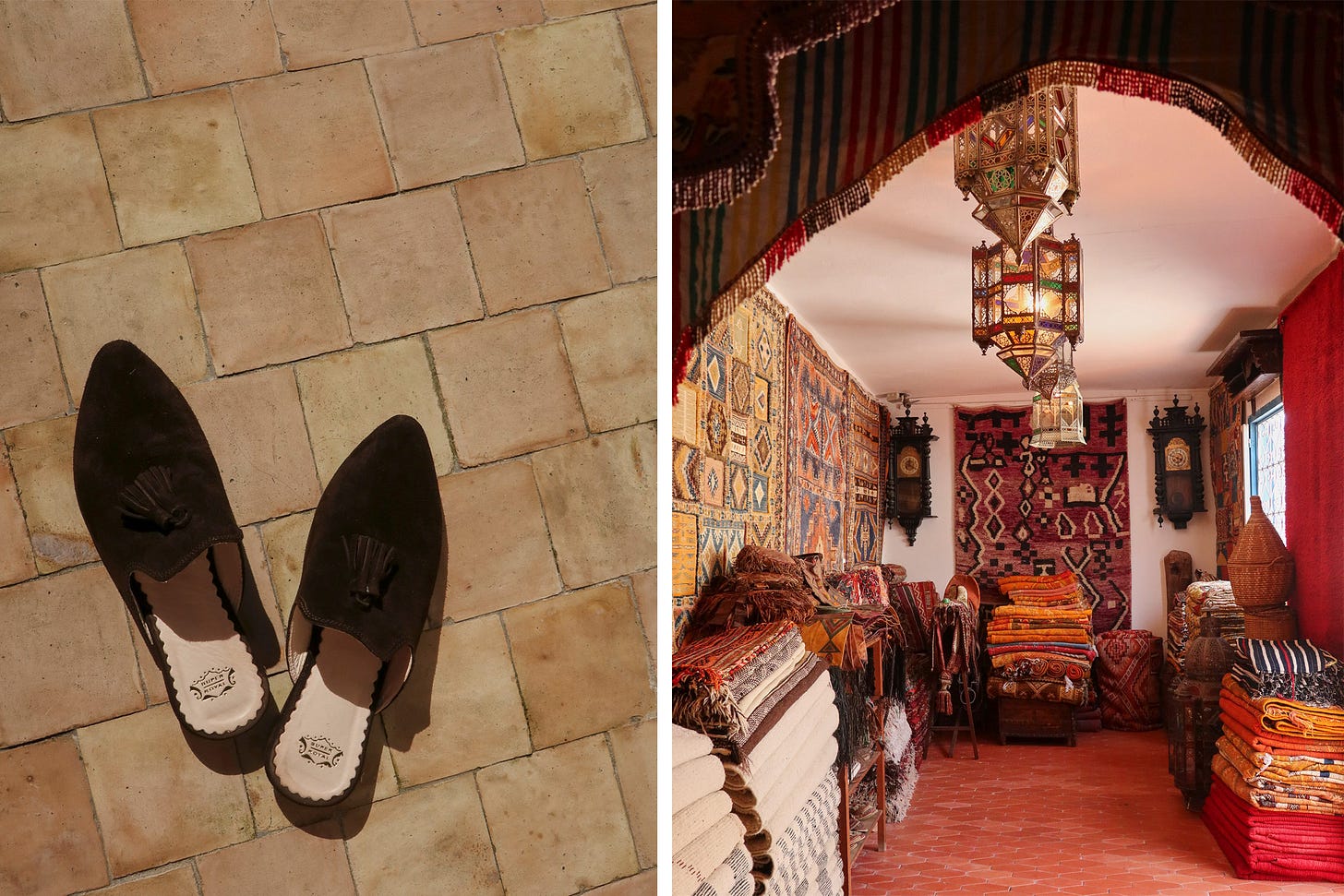
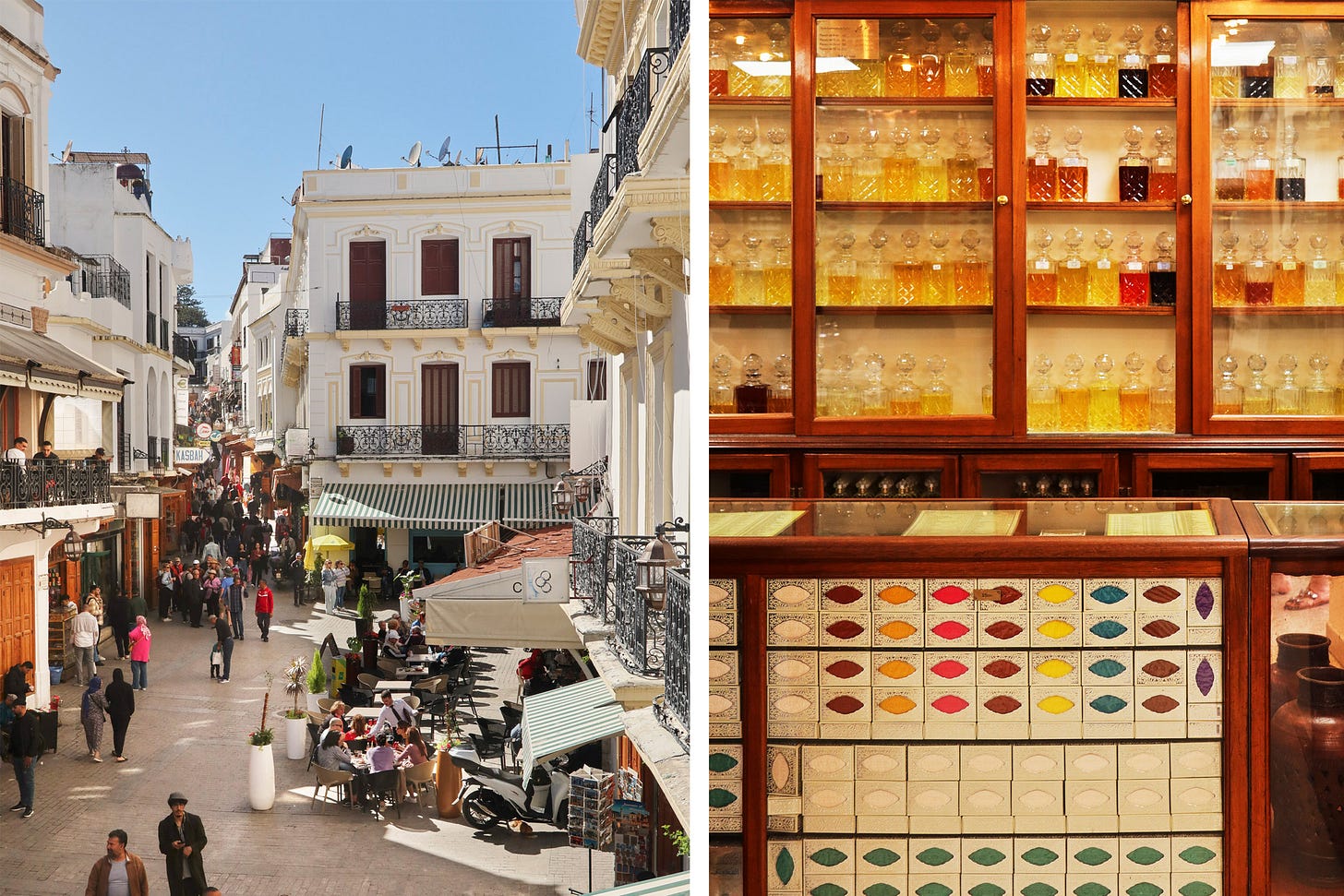
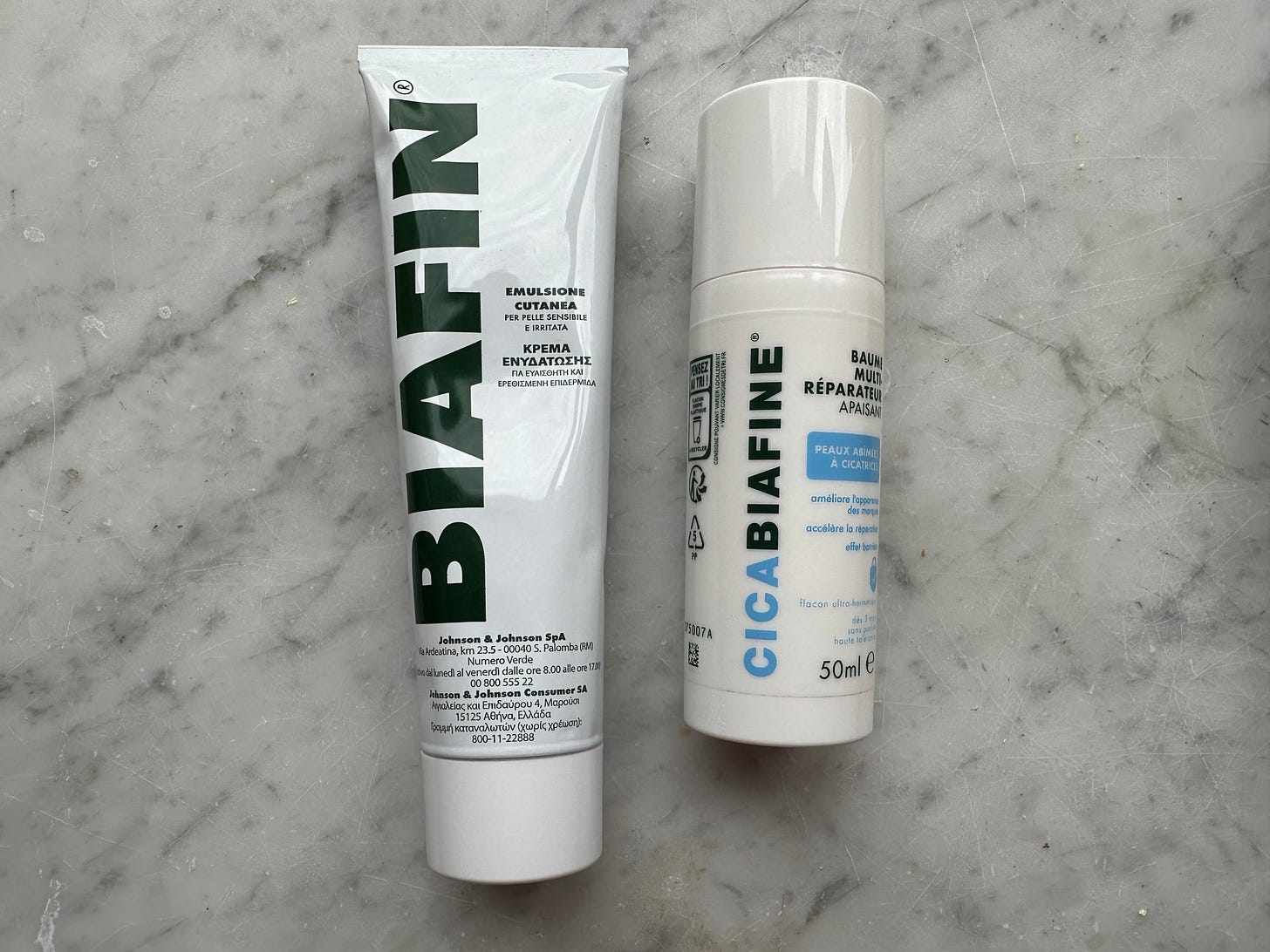
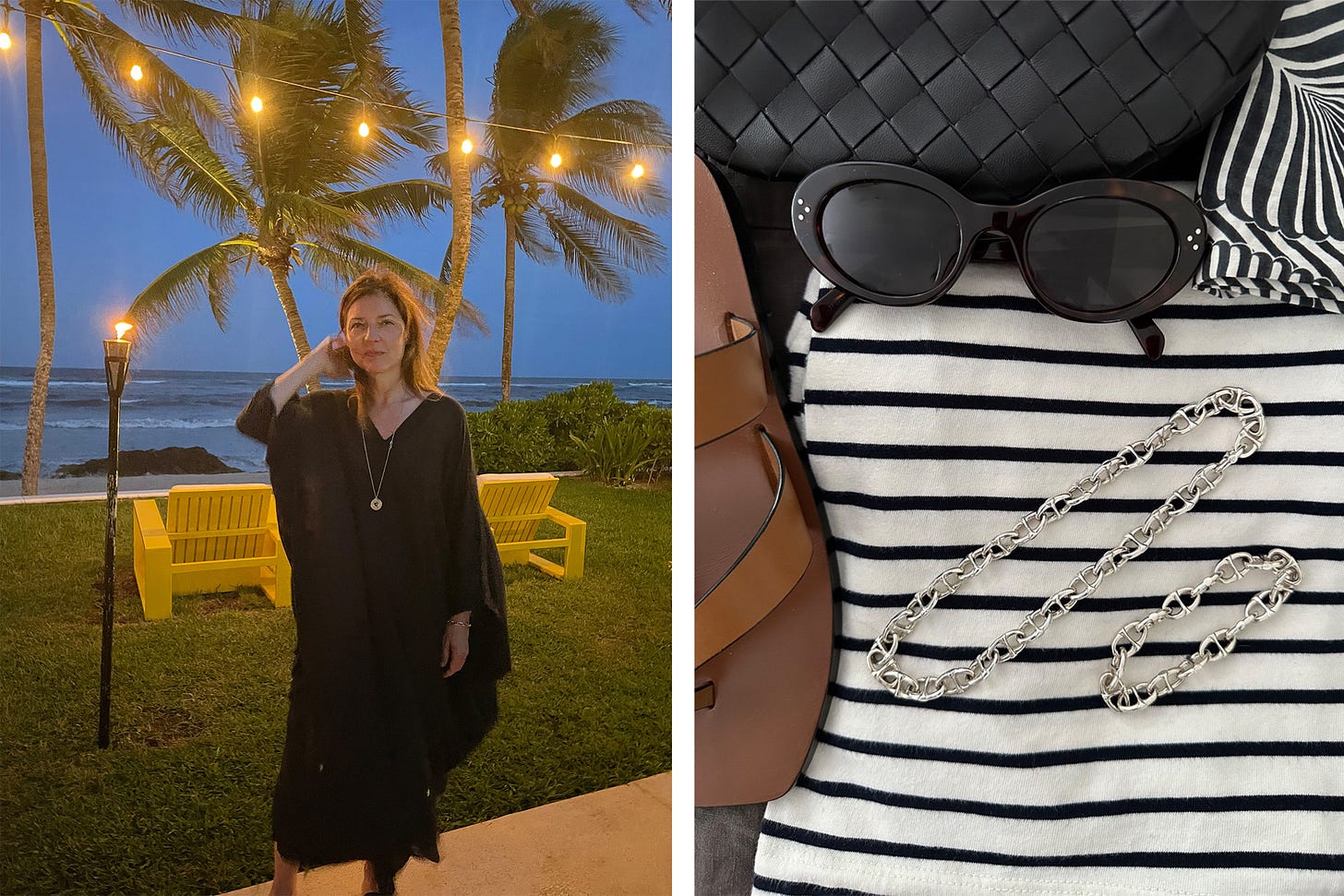
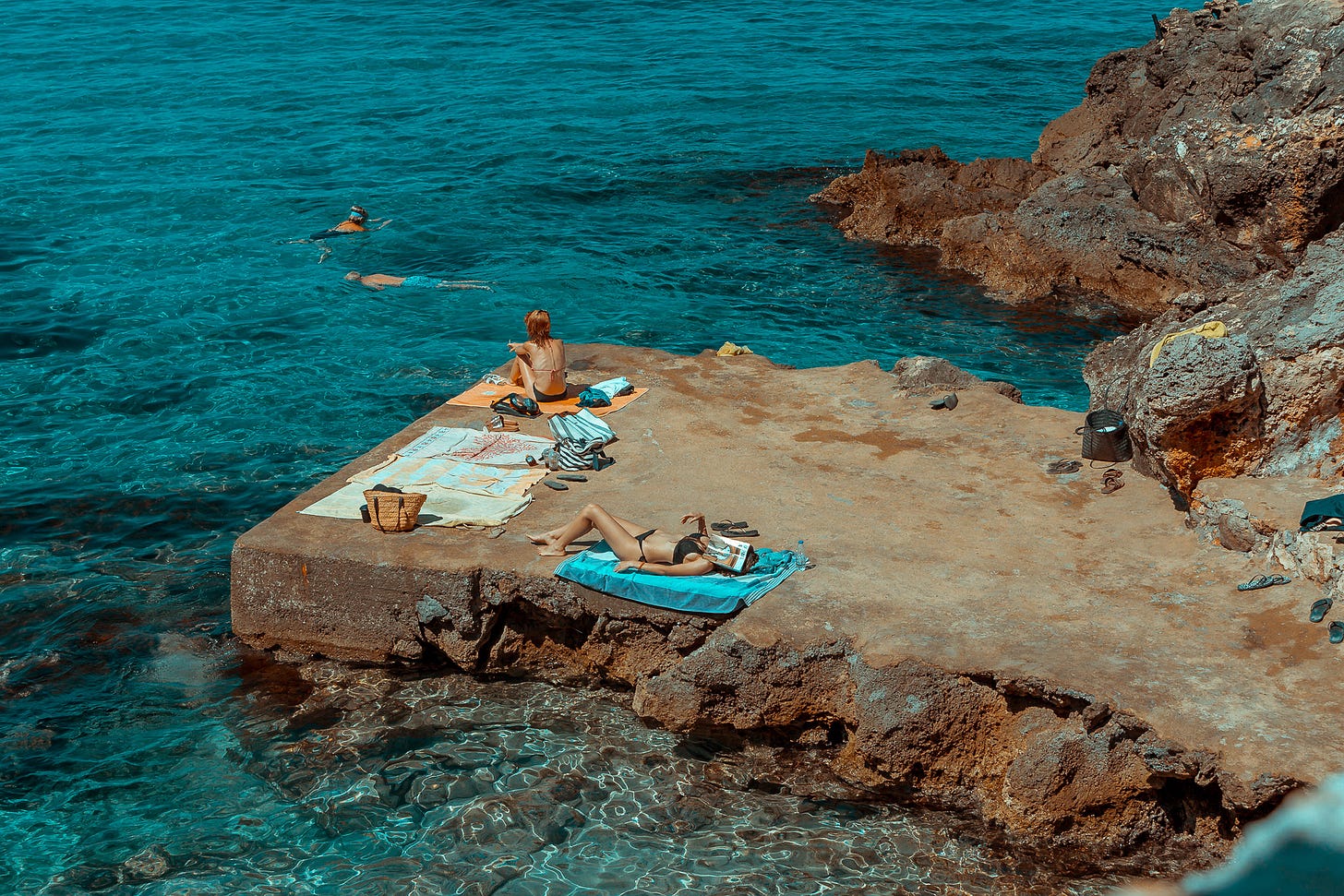
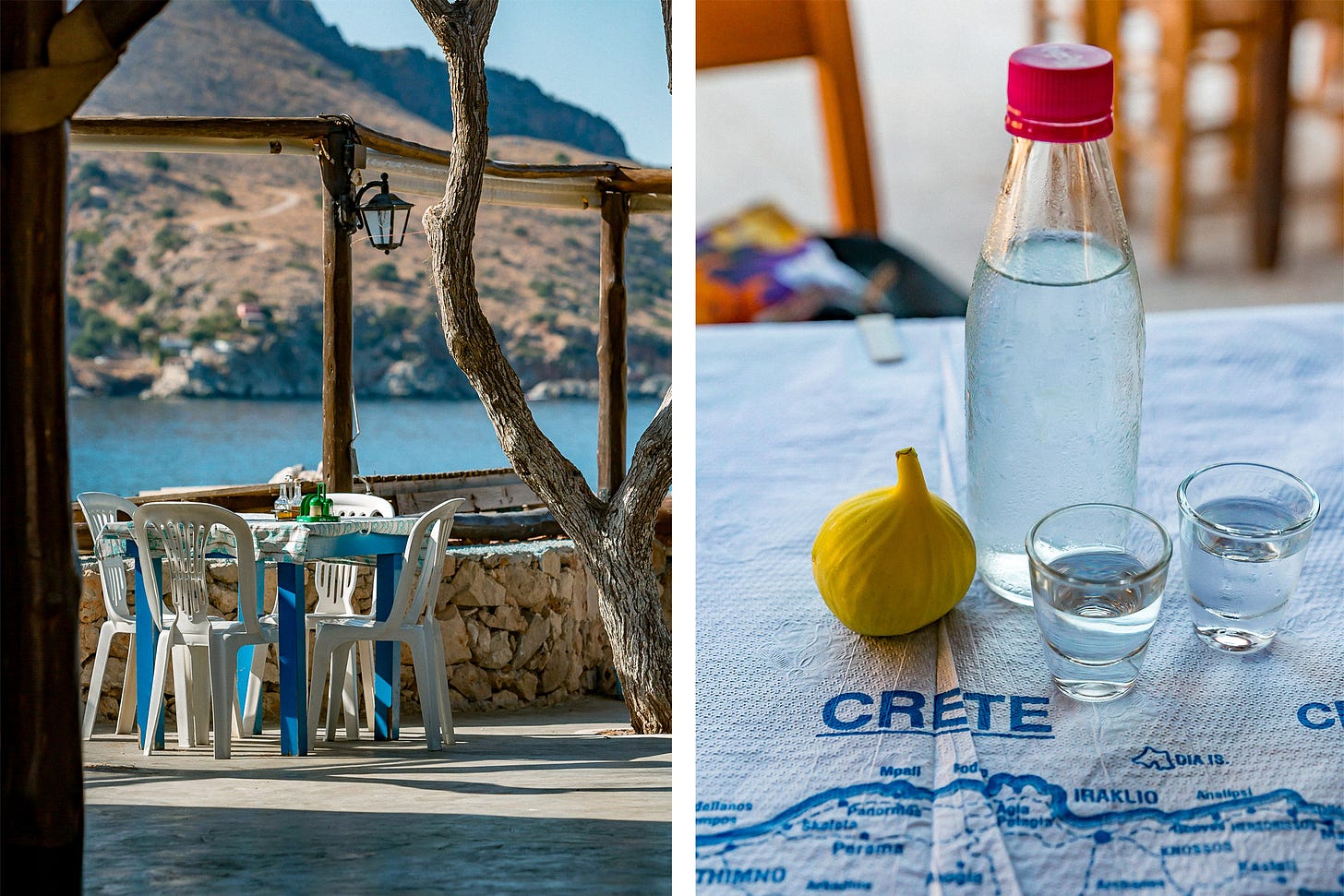

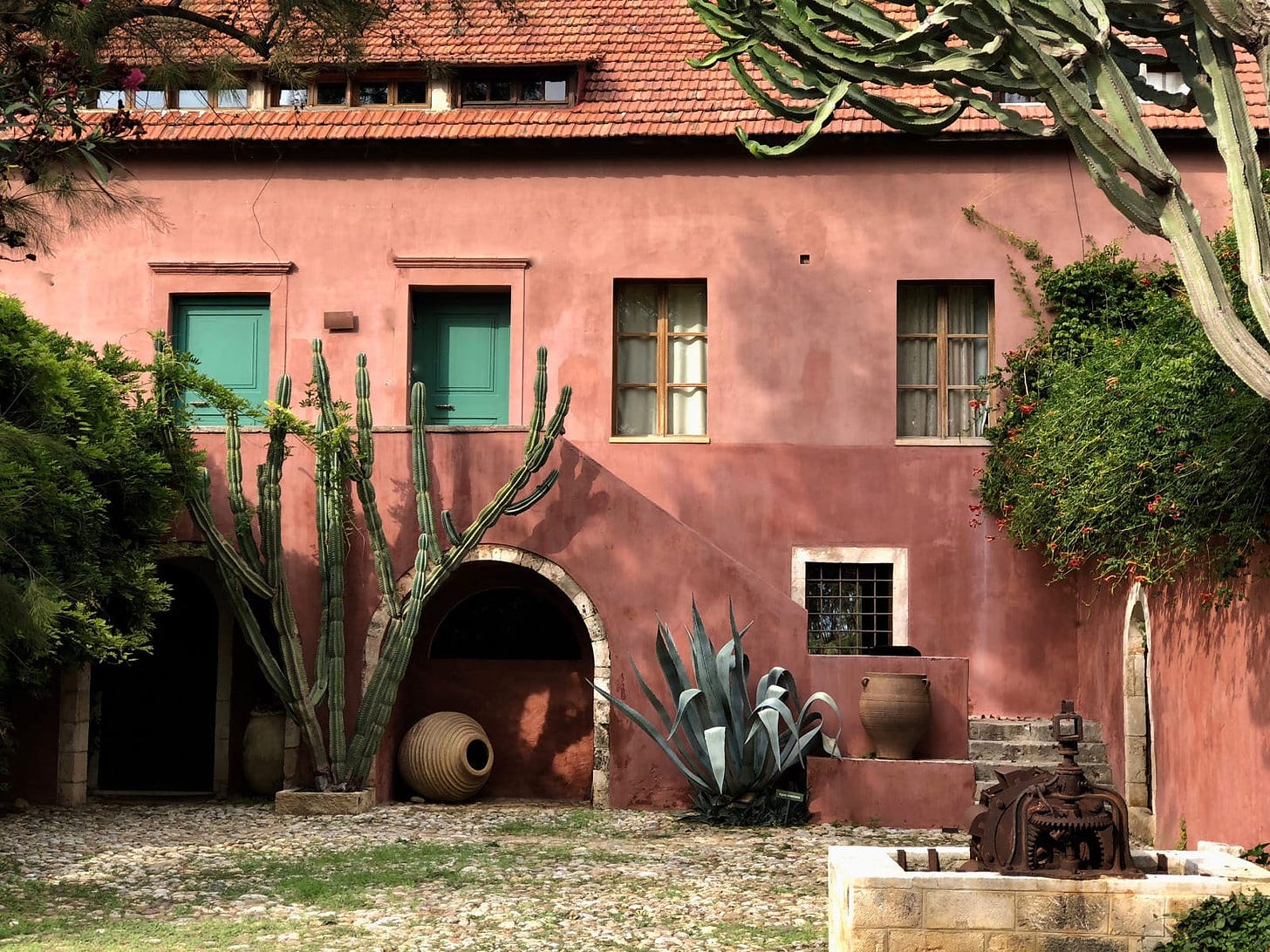
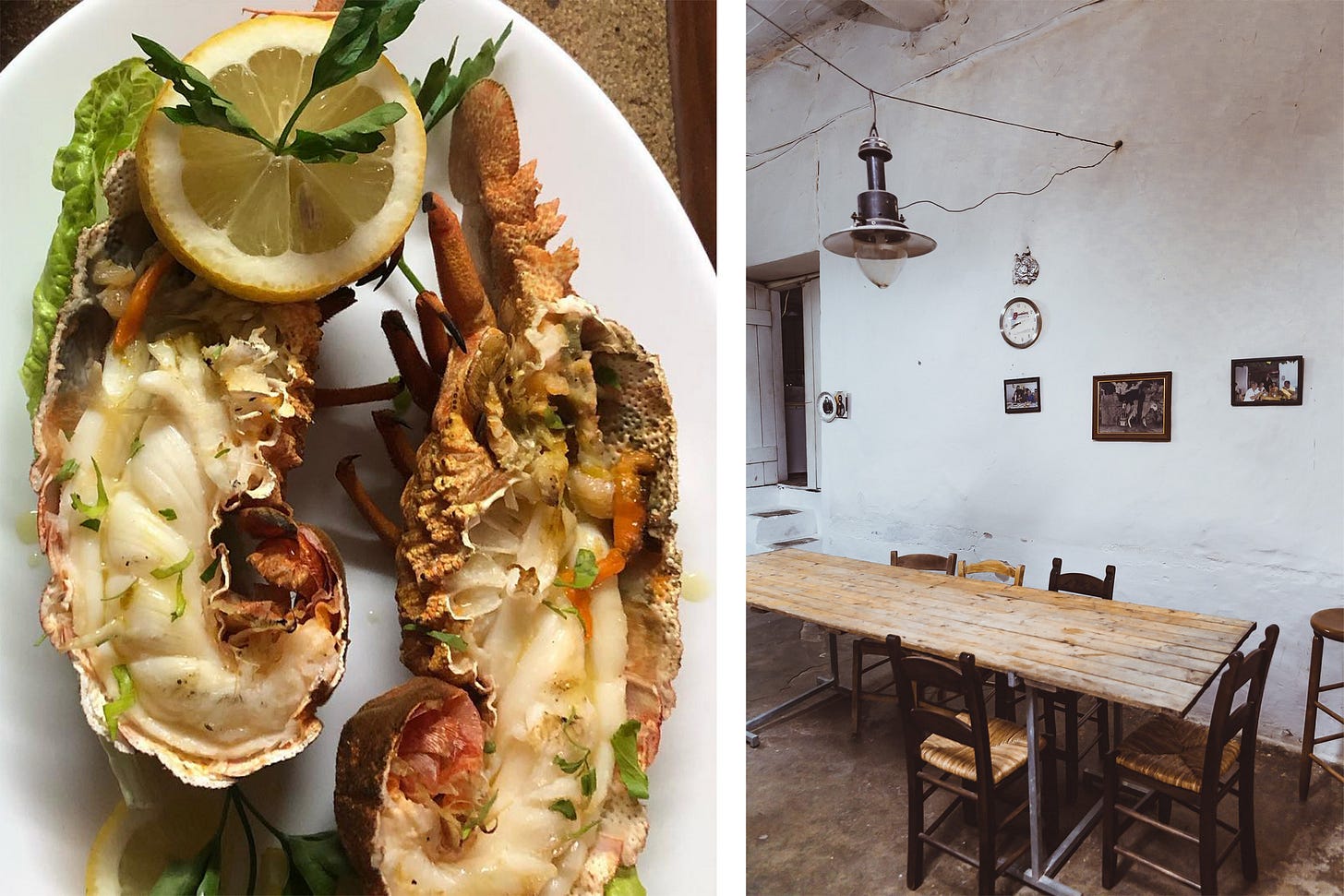
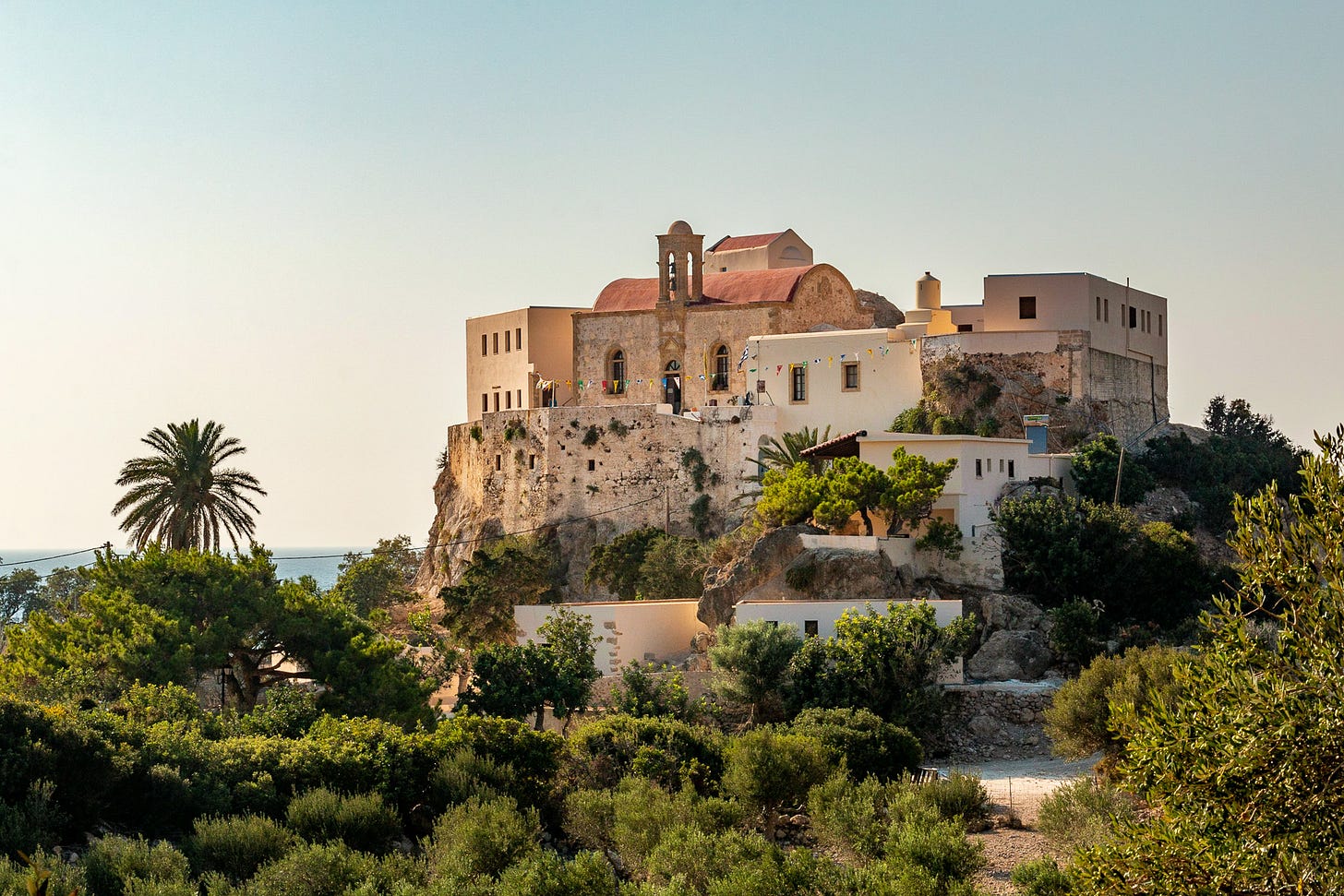
*books flight to Crete immediately
I say this all the time, but only because it’s true: I love Bric-a-Brac 😍
My husband and I spent most of May driving through Italy, listening to the “YOLO in Italy” playlist. Such treasured memories it helped us create 🇮🇹🎶🇮🇹